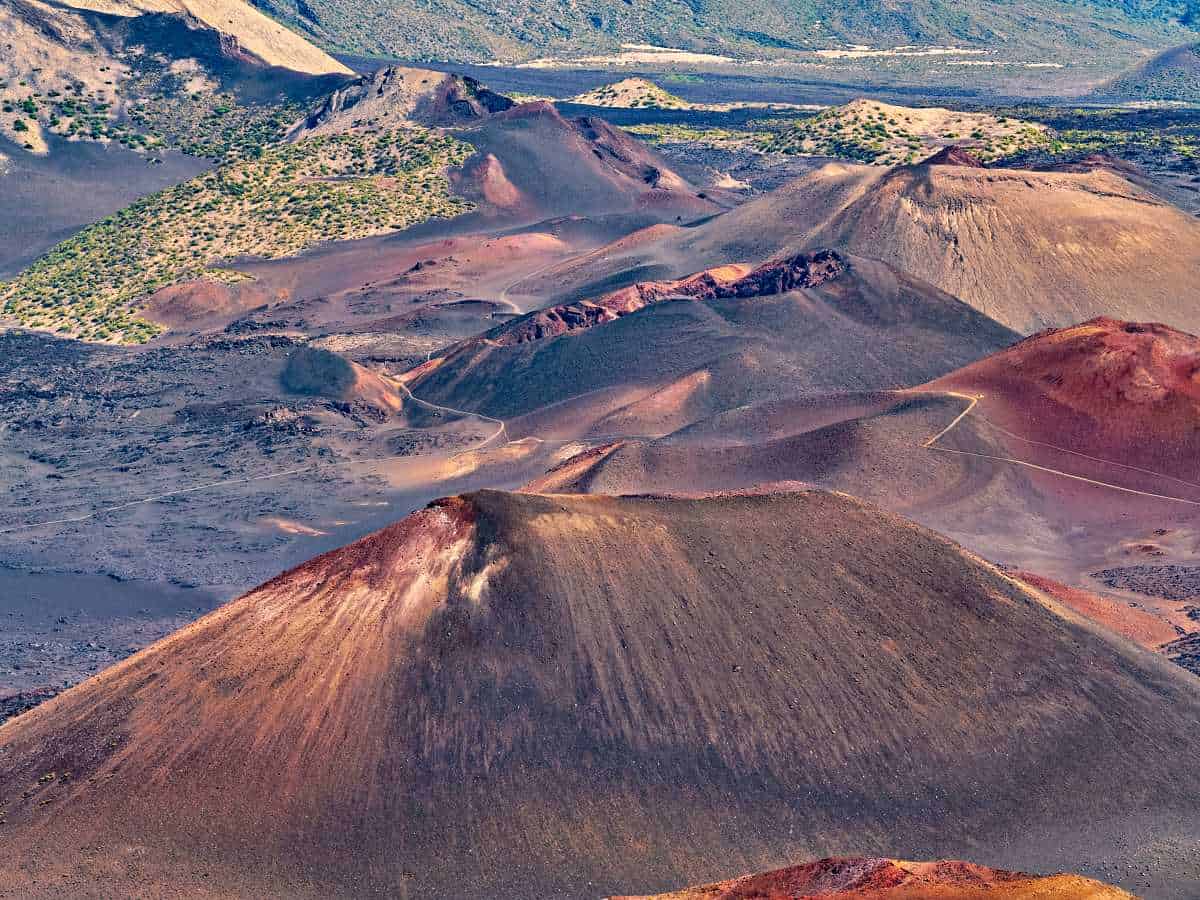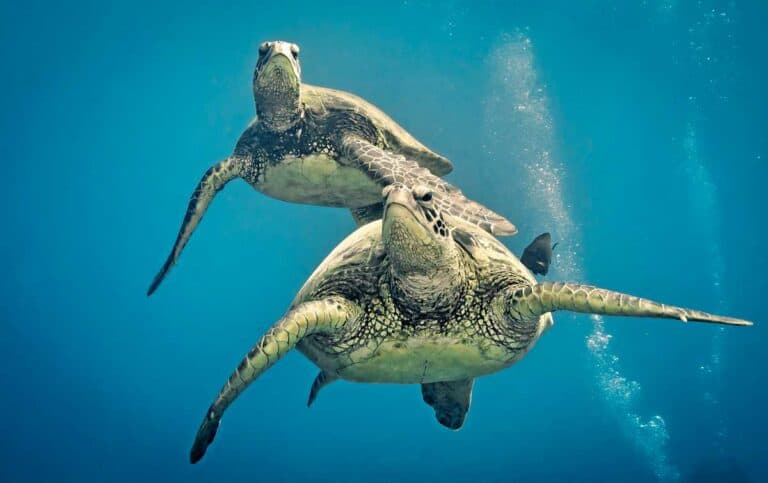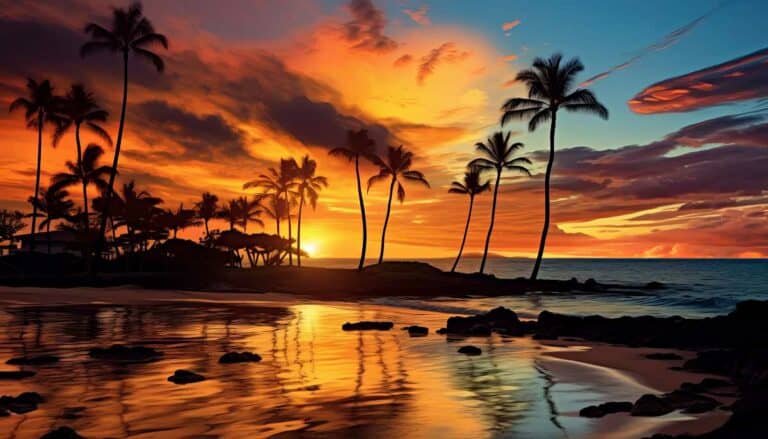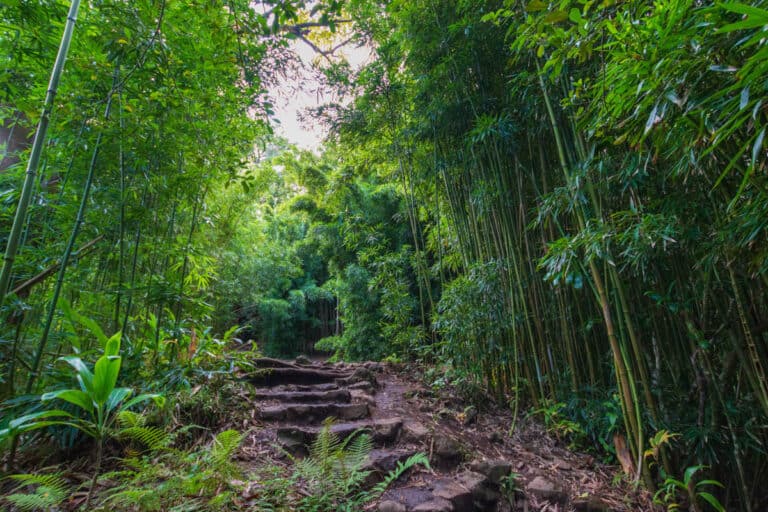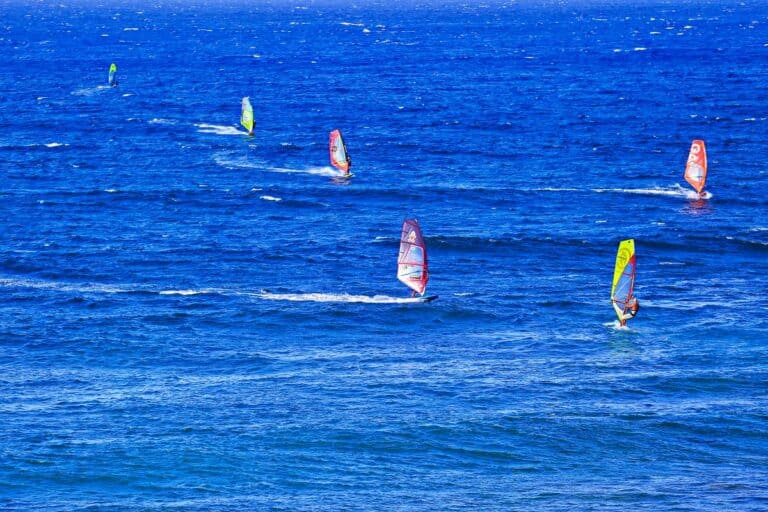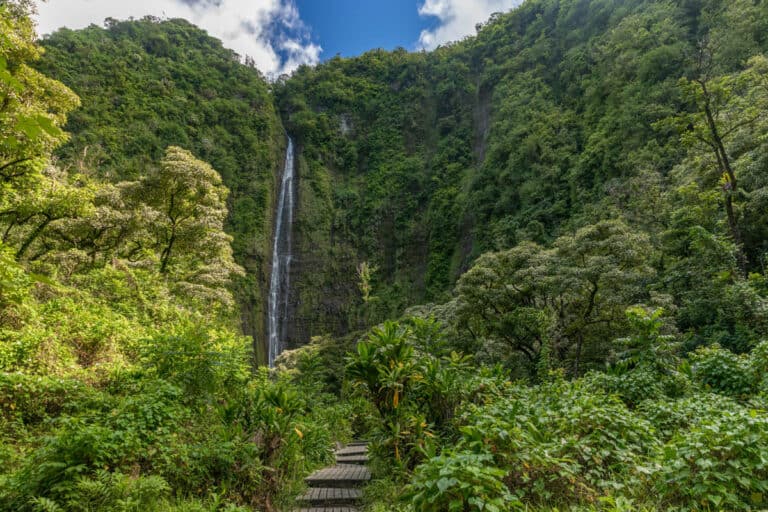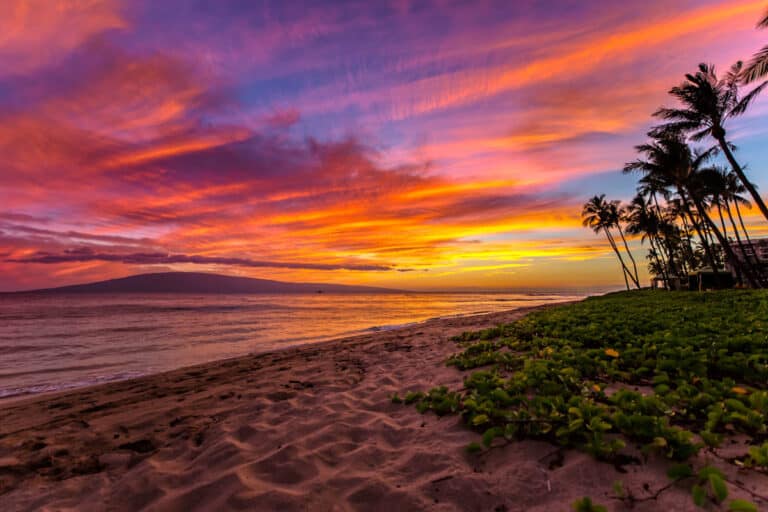Sliding Sands Trail Hike, Haleakala, Maui: 2024 Guide
Wonder if you could ever hike a trail on the moon or the Mars? Most likely not, but hiking the Sliding Sands Trail in the Haleakala National Park, Maui, is probably the closest you’ll get.
The Haleakala Sliding Sands Trail winds through the ancient Haleakala volcanic crater, with a surreal, extra-terrestrial kind of landscape.
You can expect to see the eroded remnants of multiple eruptions of the mighty Haleakala, a volcano still classified as active, but has been dormant for quite a bit.
Visible from almost every corner of the island on a clear day, the Haleakala crater towers 10,000+ feet over the island of Maui and is an iconic Maui landmark.
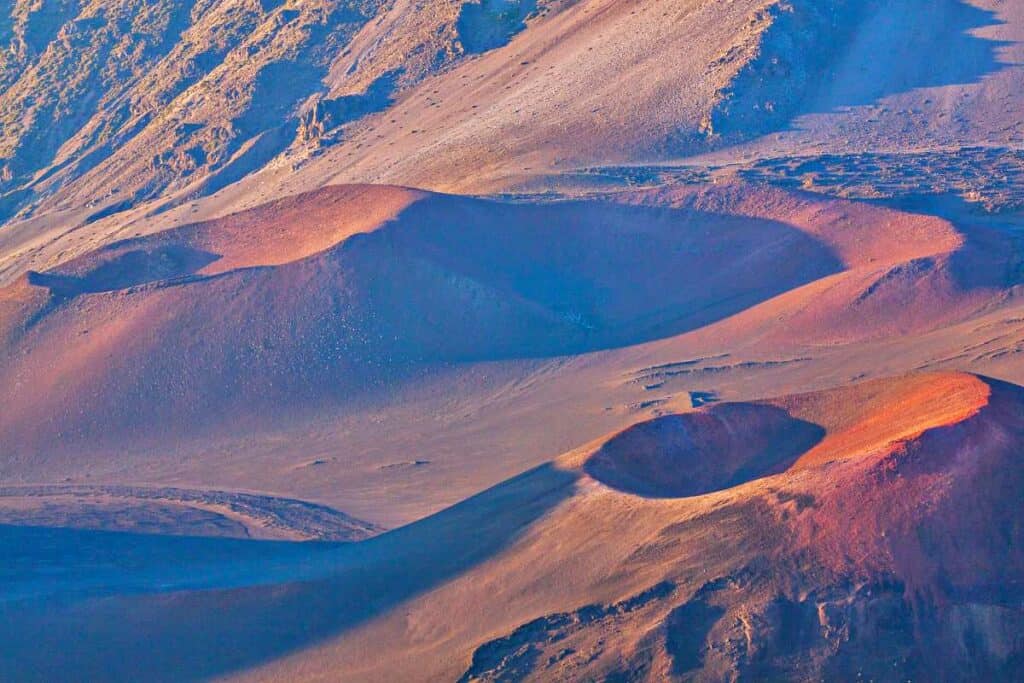
From solidified, lava sculptures to volcanic cinder cones to shifting cinders under your feet, you can see how the past 10+ eruptions have sculpted the landscape into a beautiful, alpine desert.
Don’t have the appetite for a full day, 11.1 mile hard hike? Most people don’t, but what they do is venture some distance into the trail, to experience the stark beauty of the crater landscape, and then head back up.
While Haleakala National Park offers many scenic overlooks, to really appreciate this otherworldly landscape, you have to leave your car, and hike the Maui Sliding Sands Trail!
Hey, by the way! Snorkeling is probably at the top of your Maui itinerary — check out our guides to the best tours to Molokini Crater and Turtle Town, two of the top snorkel spots on Maui!
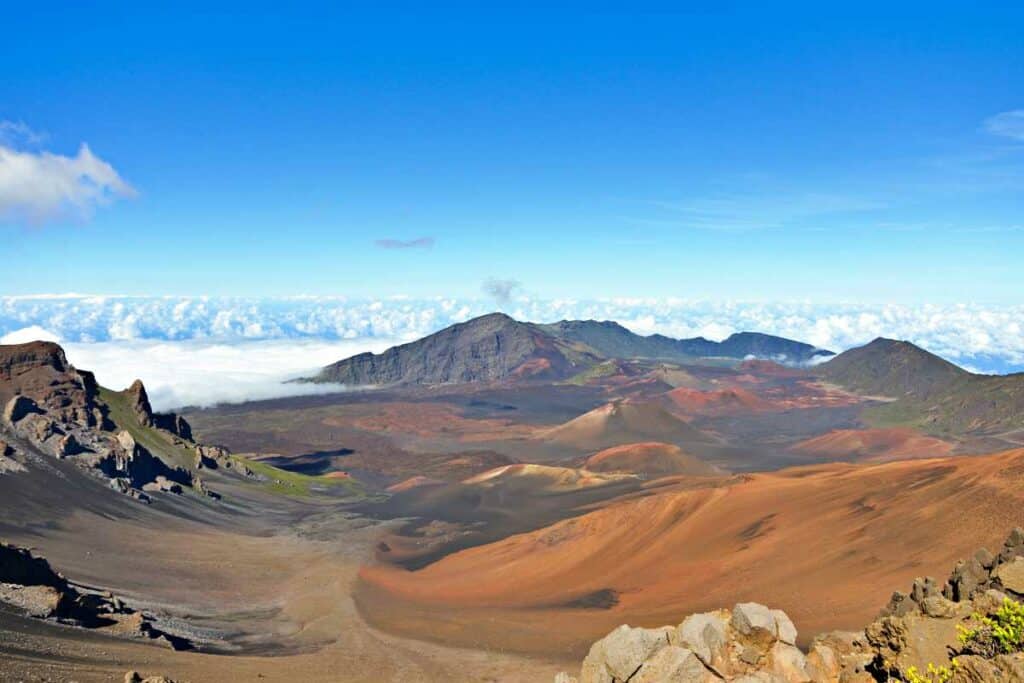
Some links on this page may be affiliate links. If you click an affiliate link and make a purchase, we may receive a small commission, at no extra cost to you. For more details, refer to our disclosure.
Sliding Sands Trail Hike: Fast Facts
The Sliding Sands Trail Haleakala National Park (officially called the Keonehe’ehe’e Trail – which means sliding sands in Hawaii or also called Keonehe’ehe’e Sliding Sands), is an inverted C-shaped hike, a point-to-point hike, if you take the Sliding Sands Trail to Halemau’u Trail (the recommended option).
Essentially this means you start from one point (Sliding Sands Trail trailhead, much higher up, 9,850 feet) but finish at a different point (Halemau’u Trail trailhead, lower point, about 8,000 feet).
That saves you about 2,000 feet of climbing, and towards the end of the long hike, you will appreciate the difference!
Where should you park if you want to hike the Haleakala Sliding Sands to the Halemau’u Trail?
Park at the Halemau’u Trail trailhead lot, and hitch a ride to the upper trailhead (recommended by the park as well).
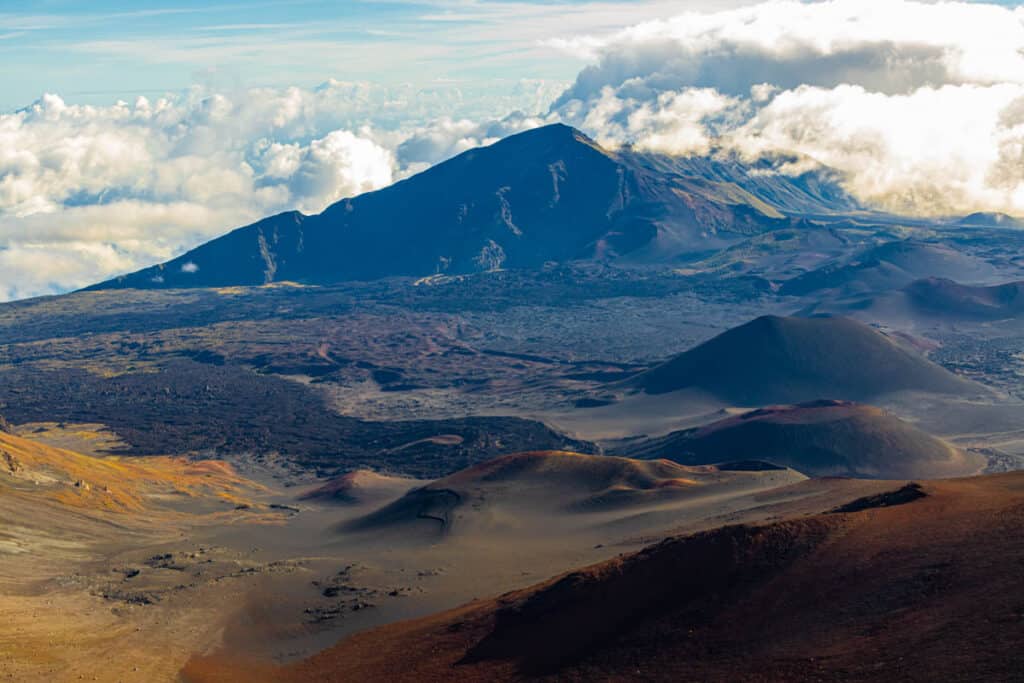
Believe me, you will be really tired at the end of the Sliding Sands hike, and will want your car to be readily accessible.
For the rest of the post, we will assume you will follow the above recommendation, and describe the trail from the upper Sliding Sands Trail trailhead.
Sliding Sands Trail Difficulty
The Sliding Sands Trail Hike is rated as hard in difficulty.
The most important thing to keep in mind is the altitude: you start at about 10,000 feet, and hiking at this altititude is difficult, irrespective of the trail, because the oxygen levels are much lower, and you get tired quicker.
Add to that the sharp descent down the rim of the crater and the steep climb back, the sometimes sandlike trail, and the often bleak and changing weather conditions.

You definitely have a hard hike in front of you!
Sliding Sands Trail Distance
The entire Sliding Sands Trail distance is 11.1 miles, and unlike most other trails, the trail is point to point, as mentioned above.
Most people hike a part of the trail, and return. The initial sections of the trail are spectacular and you can tick off exploring the inside of a giant volcanic crater from your Maui bucket list items!
If you choose to do this, keep in mind the sharp climb back to the rim of the crater at high altitudes, and be conservative about when to turn back!
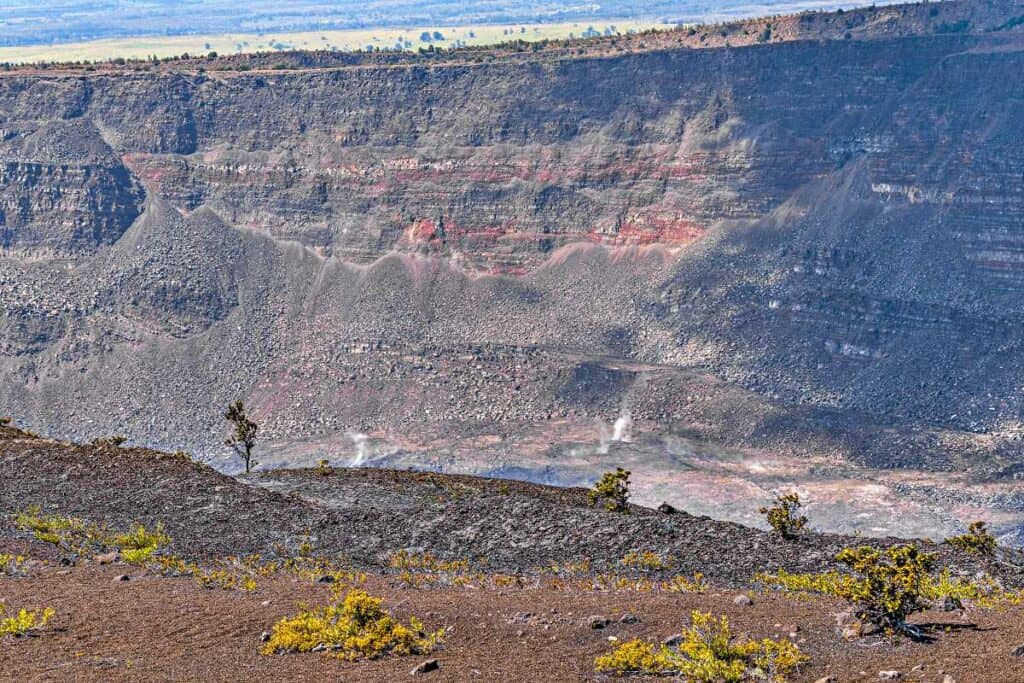
Here’s a handy tip, if you take 15 minutes to hike down, expect to take twice the time to climb back up.
>> Book these 5-star rated, highly popular, Maui Tours now!
Sliding Sands Trail Elevation Gain
The Sliding Sands Trail elevation gain is about 2400 feet.
For the first part of the Sliding Sands Trail, about the first three miles, you are actually descending roughly 2400 feet to the floor of the crater.
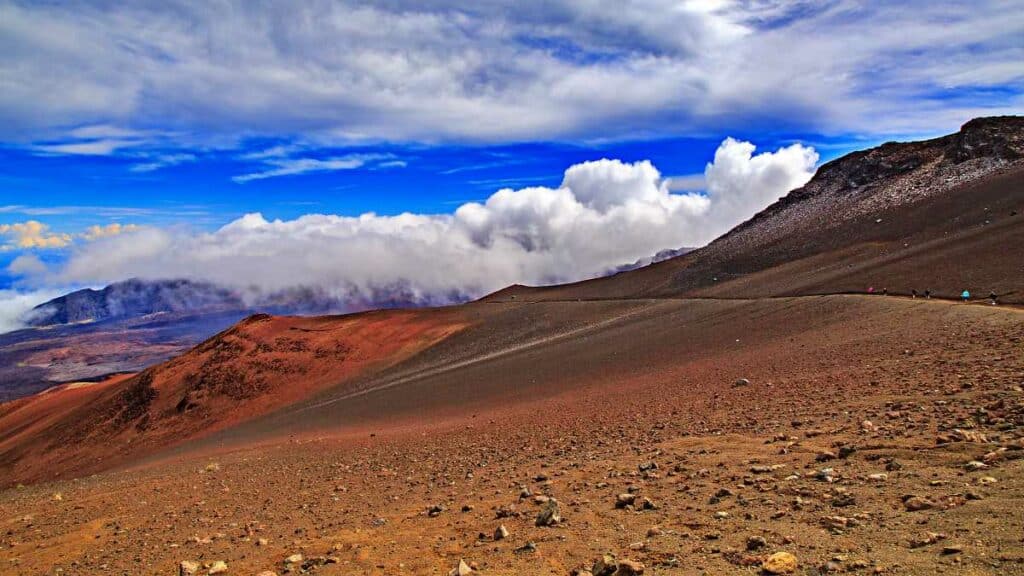
To exit the crater, either by returning or by continuing along the C-shaped trail, you have to climb back about 2150-2400 feet.
Sliding Sands Trail Time Taken
At a typical hiking pace of two miles an hour, it should take roughly 6 hours to complete the Sliding Sands Trail hike.
In practice, most people will take 8-10 hours, because of the sandlike cinder trail sections and the steep descent and climb back up.
Also, a fast pace is difficult to sustain at the higher trail altitudes.
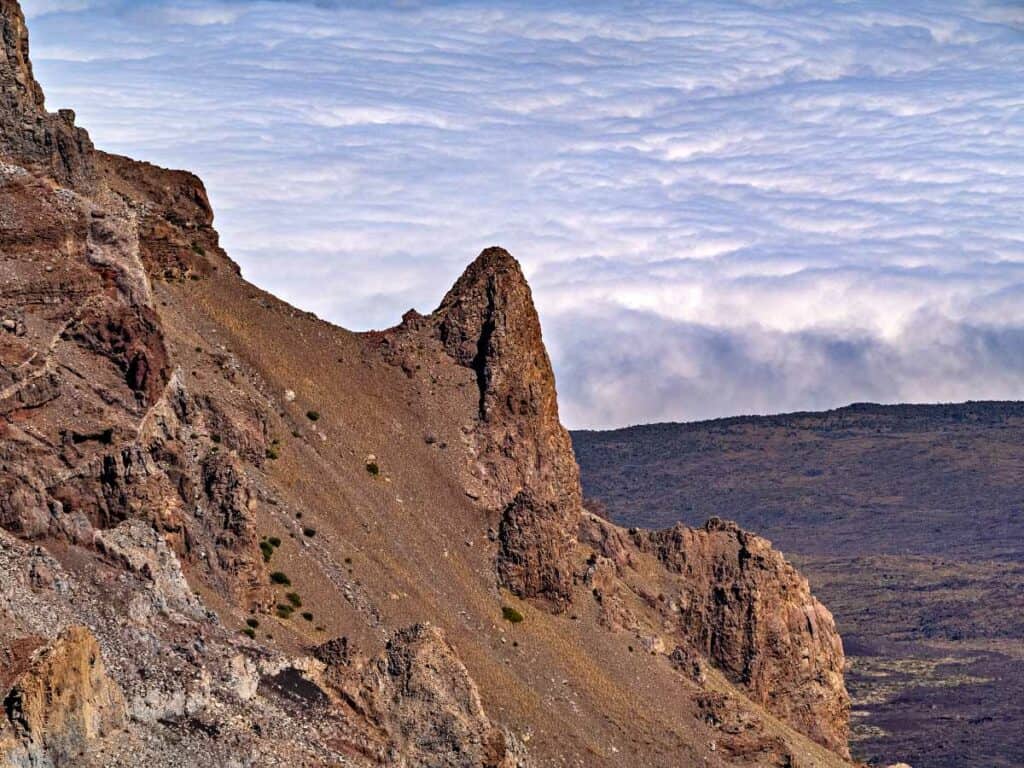
What about Kids and Dogs on Sliding Sands, Maui?
Dogs are not allowed on the Sliding Sands Trail (or any trail in Haleakala National Park).
Hiking the Sliding Sands Trail is considered challenging for adults, so obviously you can expect it to be very hard for kids.
If you are hiking the Sliding Sands Trail as a family with kids, I would say do a short section, and turn back. Keep in mind you have to climb back, so plan accordingly.
Sliding Sands Trail: Different Hike Options
As described above, Sliding Sands Trail is a long hike, and you can divvy it up multiple ways:
Sliding Sands Trail Short Hike
Most people go with the Sliding Sands Trail short hike option, and the distance they hike is of their choosing.
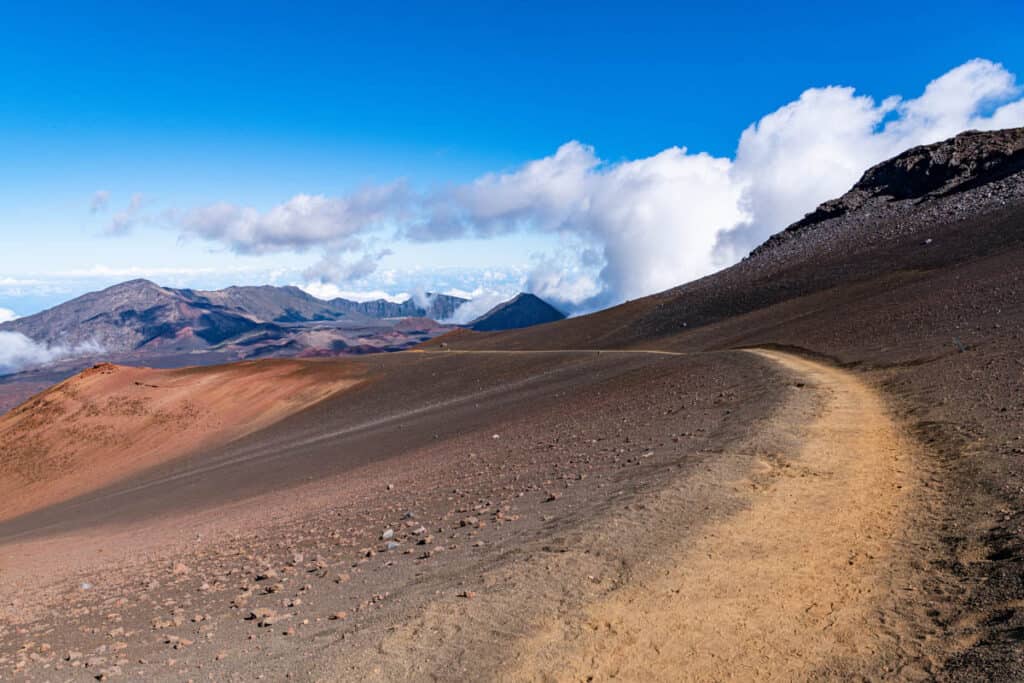
Shortest is a quick half-mile round trip to a viewpoint and back, enough to give you a cursory exploration of the crater from a vantage point
Longer distances could be up to the basin floor and back, or to a popular cinder cone, Ka Lu’u o ka O’o Cinder Cone, and back.
Hike the Inner Loop and Back to the Sliding Sands Trail Trailhead
This option treats Sliding Sands Trail as an out-and-back roughly 13 mile hike, and is likely the most difficult option.
Hike the Sliding Sands Trail to the Halemau’u Trail / Trailhead
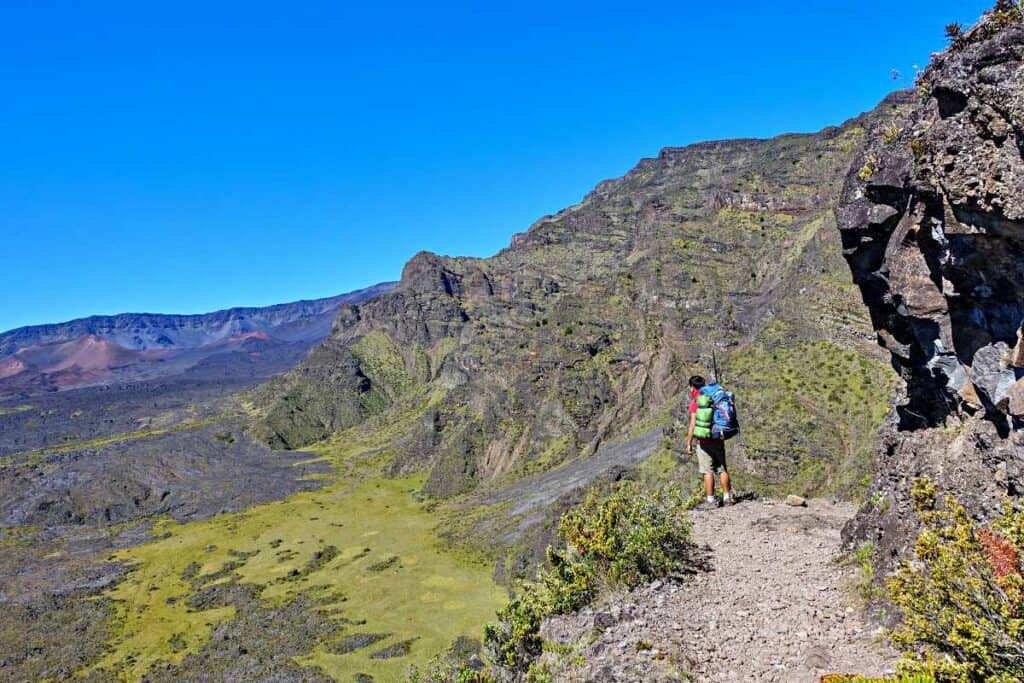
This is the option described below, and is easier because the return climb is roughly 2,000 feet less, a huge difference at these altitudes and at the end of the hike.
Also, a lot more interesting, since you see more of the crater floor and the Halemau’u trail is distinctly different in terms of the vegetation and the views.
>> Book these 5-star rated, highly popular, Maui Tours now!
Getting to the Sliding Sands Trailhead
The Sliding Sands Trail is in the Haleakala National Park, Maui.
If you’ve not yet been to the park, check out our in-depth guide and tips to the best things to do in the Haleakala National Park.
You will drive almost to the end of the Haleakala Highway (Hwy 378) to the Haleakala Visitor Center.
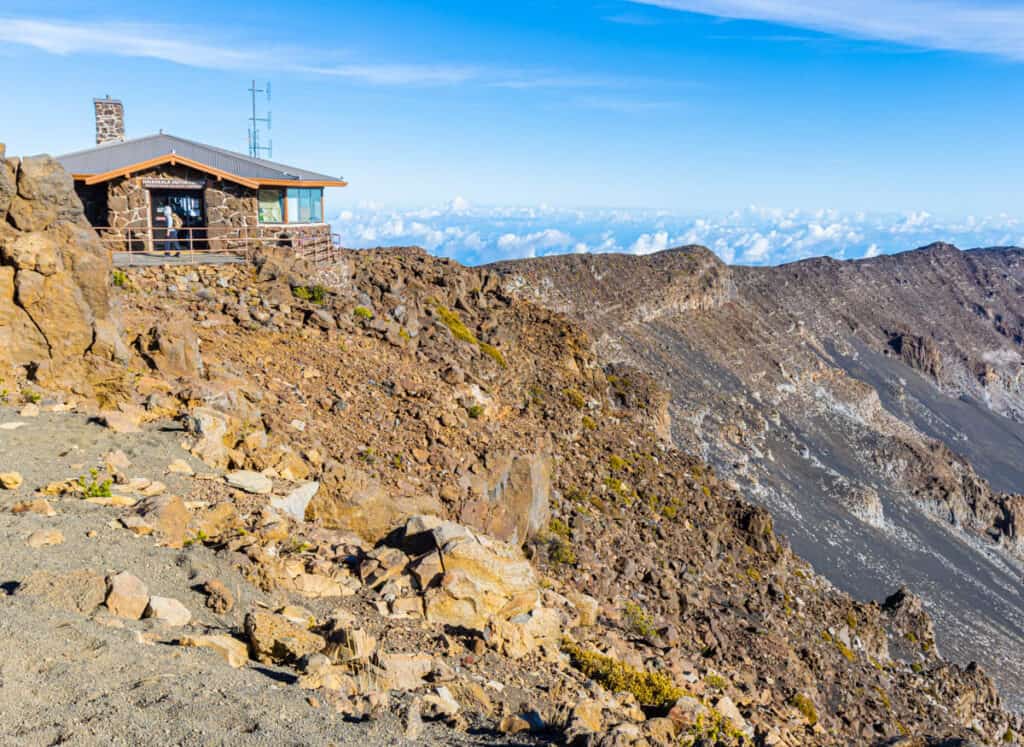
Restrooms are available at the trailhead.
The Sliding Sands Trail trailhead is at the end of the Haleakalā Visitor Center parking lot near the road.

The Pa Ka’oao Trail is a short hike to a higher vantage point where you get an excellent view of the crater, you might want to consider this prior to your hike.
Sliding Sands Trail Parking
Planning a short to medium hike on the Sliding Sands Trail and then coming back? Use the Haleakala Visitor Center parking lot, and the trailhead is at the far end.
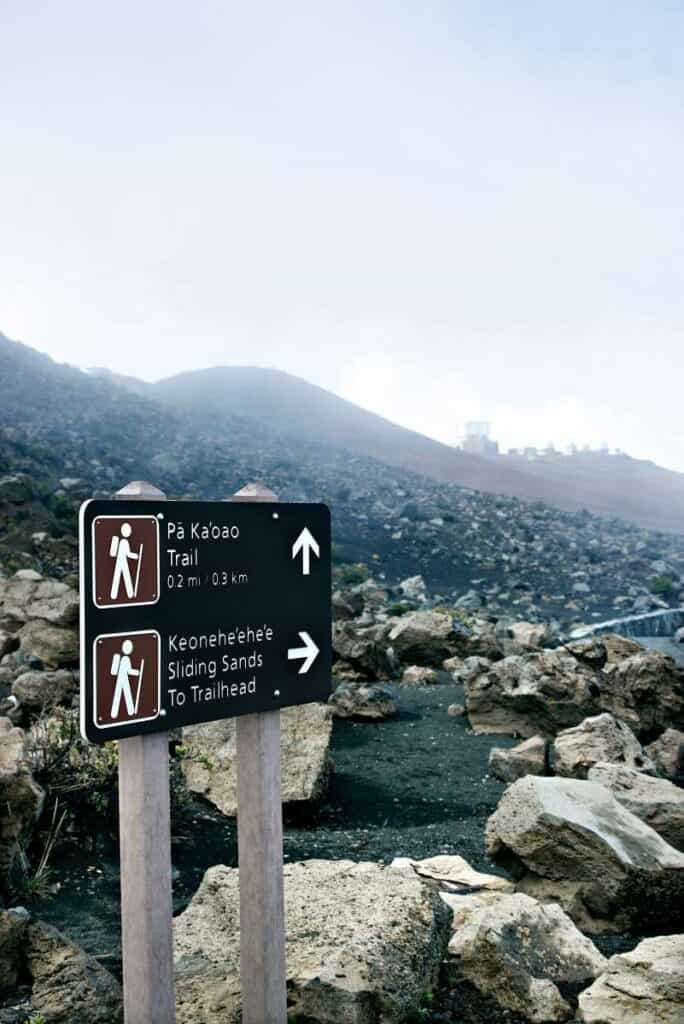
If you plan to hike the entire Sliding Sands Trail to the Halemau’u Trail and its trailhead, park at the Halemau’u Trailhead parking lot.
A small cutout area is available for hitch hiking to the Sliding Sands Trail trailhead. Note, hitch hiking is officially recommended as the preferred way to get over to the trailhead at the Halaekala Visitor Center.
>> Book these 5-star rated, highly popular, Maui Tours now!
Best Time to Hike the Sliding Sands Trail
The Haleakala National Park is open 24 hours throughout the year, but do check for current alerts, park conditions and closures.
Looking for something special? While the trail can be taken any time, the sun rise along the trail is spectacular, with the sun rising over the clouds and lighting up the crater and the trail.
Sunrise at Haleakala is an unforgettable experience!
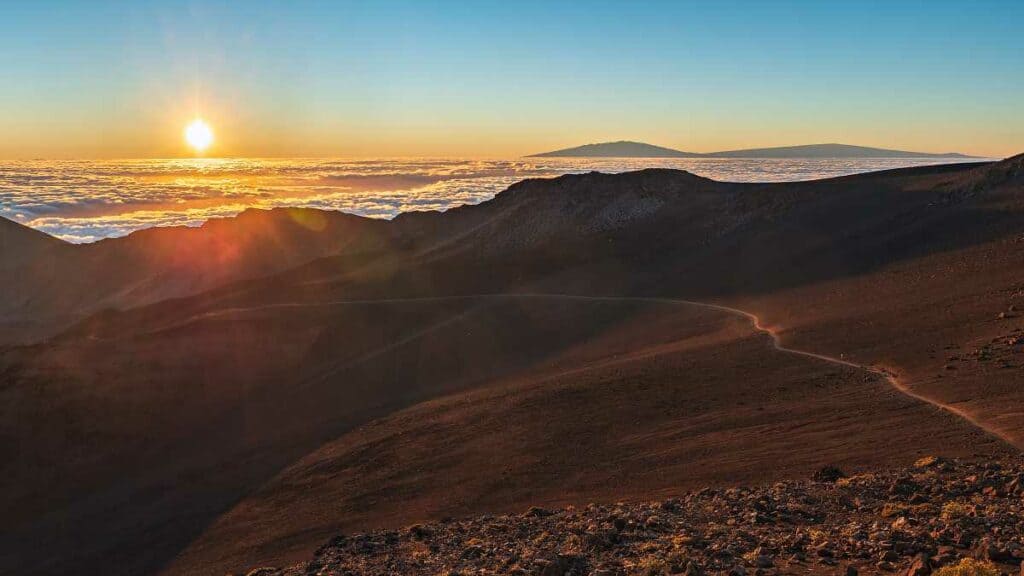
If you want to enter between 3:00 am to 7:00, you need to make reservations, as described.
Getting up at 3:00 am not your thing? Sunsets on the trail are equally amazing in my view, and much more feasible! Plan to stay back for the sunset if you have the time.
The weather conditions change quickly around the summit, so even if it looks cloudy and you can’t see much, don’t give up! In thirty minutes, everything can clear up and you can enjoy spectacular views!
Besides, watching the fog and clouds roll down the jagged walls of the crater is beautiful!
Sliding Sands Trail Map
The below Sliding Sands Trail map shows the locations of the different points mentioned above.
Sliding Sands Trail Information
Hiking the Sliding Sands Trail is the best way to explore the Haleakala crater.
The trail winds through the massive, 30,000-acre Haleakala crater, starting from the summit, descending down to the crater basin floor, and taking you through a desert-like landscape dotted with large volcanic cinder cones.
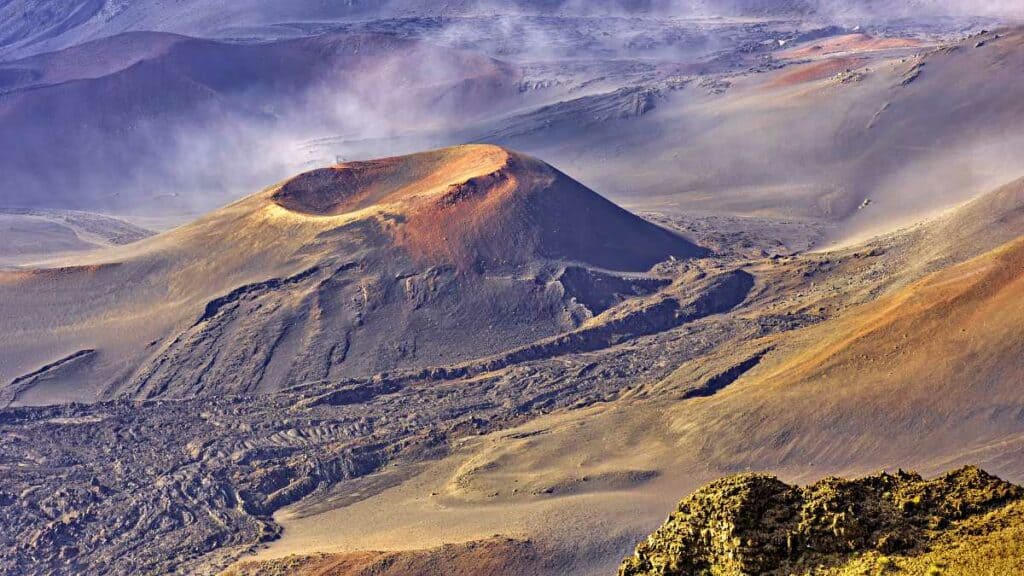
Initial Overlook (0.25 miles)
The Sliding Sands Trail starts off along the highway and with some steps, the start of a steep descent from the crater rim towards the crater floor.
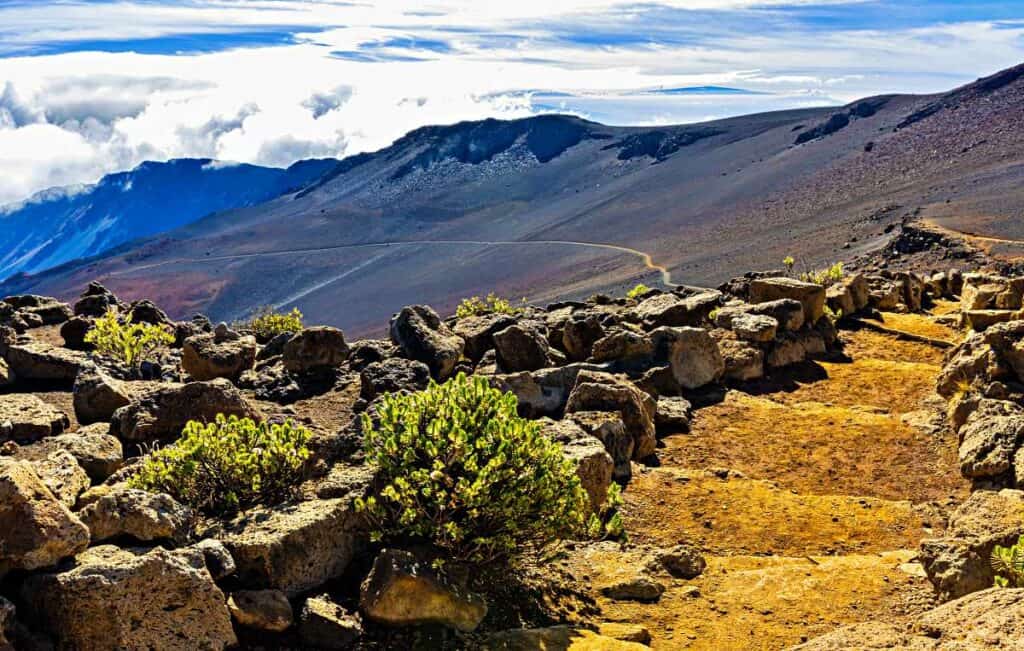
Just a quarter of a mile into the trail, you come to the first overlook (roughly 50 feet elevation change), a dramatic first view of what awaits you further along the trail.
You can get a panoramic view of the Haleakala crater from this viewpoint and, for those seeking the easiest hike, this is it!
Haleakala Crater Floor (3.8 miles from trailhead)
You will continue to descend about 2,500 feet along the trail with some large switchbacks till you reach the Haleakala crater floor.
The descent is relatively easy and not sloped too aggressively, and the landscape gets rockier (larger boulders) as you go down.
While viewing the crater basin from the higher altitude lookouts and the trail, you probably pictured a lifeless, desolate crater basin.
But even in this bleak landscape, you will find Hawaiian plants and Hawaiian birds, uniquely adapted for this habitat.
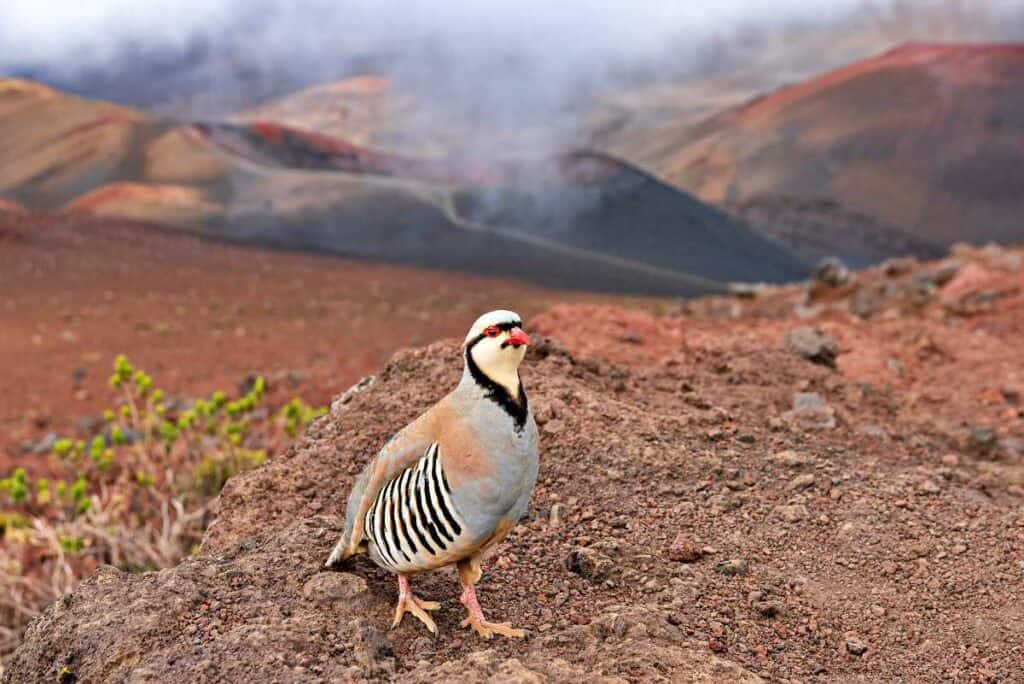
Nene, Hawaiian endemic geese, highly endangered, can be seen, along with chukar partridge, a game bird imported to the islands for hunting.
The pretty and endemic ‘āhinahina (silversword) can be seen along the Sliding Sands Trail.
This native plant flowers only once in its lifetime of upto 90+ years! No wonder seeing a blooming flower is considered extremely rare and lucky!
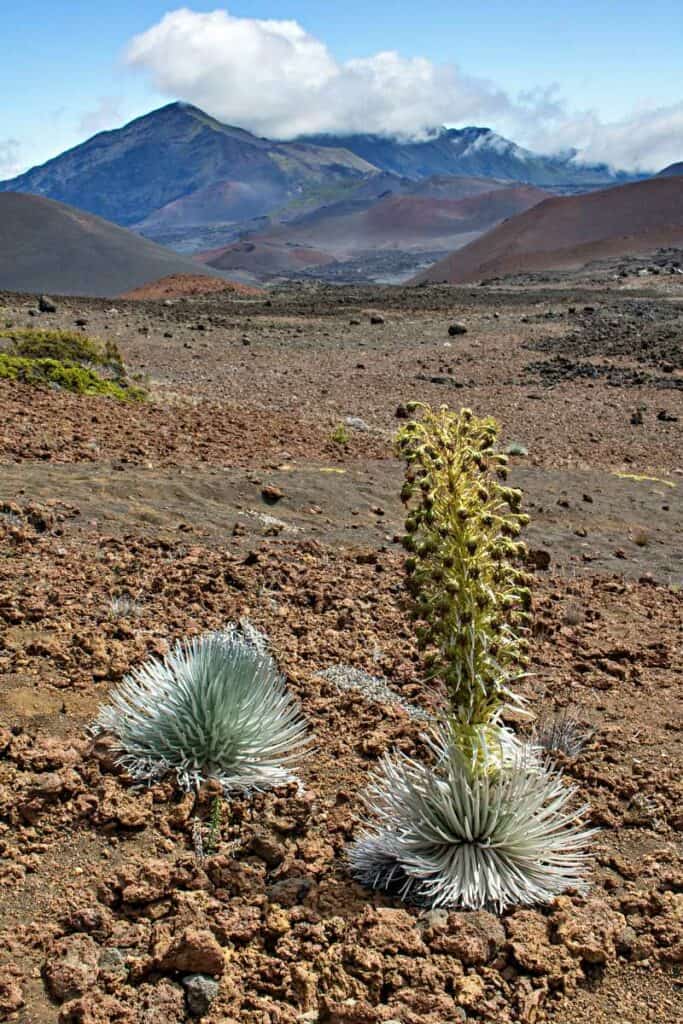
Ka Lu’u o ka O’o Cinder Cone
As you continue hiking on the Sliding Sands Trail, you will come to a junction.
Notice the almost geometrical cinder cone from high up on the initial sections of the Sliding Sands Trail?
Most likely, that was Ka Lu’u o ka O’o, one of the youngest volcanic features on the western crater area, created probably a thousand years ago.
The spur trail leads to the top of the volcanic cinder cone, well worth exploring if you have the time!
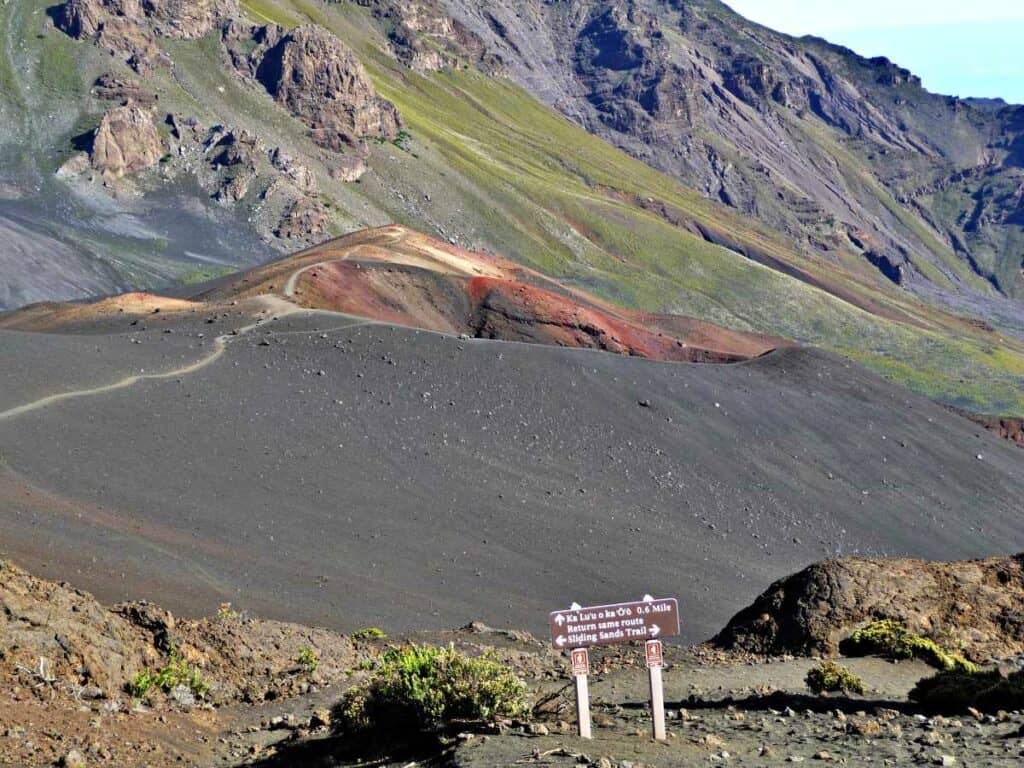
Note, some side trails have been closed since Covid, so please obey the posted signs.
Pele’s Paint Pot (5.7 miles from trailhead)
You will come to another fork and the Sliding Sands Trail continues to Kapalaoa Cabin, a remote historic wilderness cabin, where you can stay if you have reservations.
The other trail takes you to Halemau’u Trail, and that’s the one you need if you are headed there.
Though a pretty gradual continuing descent, the hike is a bit harder and the pace slower. The cinder dust acts like sand, so almost like walking on a sandy beach.
At about 5.7 miles into the hike is roughly the halfway point, near the north side of the Halāli’i cinder cone.
This part of the Sliding Sands Trail is whimsically called Pele’s Paint Pot for the vividly colored, sandlike cinder dunes that rise from the crater floor.
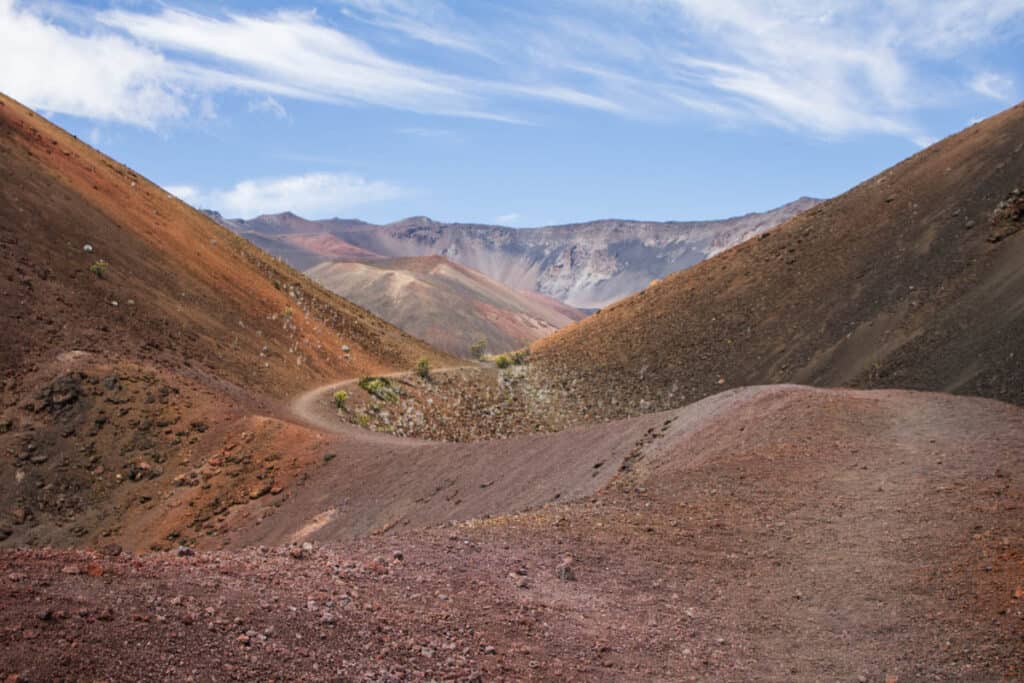
Kawilinau (Bottomless Pit) (5.7 miles from trailhead)
Just a few minutes further up is Kawilinau (also about 5.7 miles in), which was formerly called the “bottomless pit.”
Not really bottomless, the volcanic pit is about 65 feet deep.
Halemau’u Trail Junction
About this time, you have the option of an out-and-back hike on the Sliding Sands Trail with a small inner loop, or you can switch to the Halemau’u Trail and follow the inverted C-shaped hike discussed above.
Your choice will obviously depend on what you had planned earlier and where you parked.
The much easier option is the Halemau’u Trail, since you are climbing back to a lower point (about 8,000 feet instead of 9,850 feet).
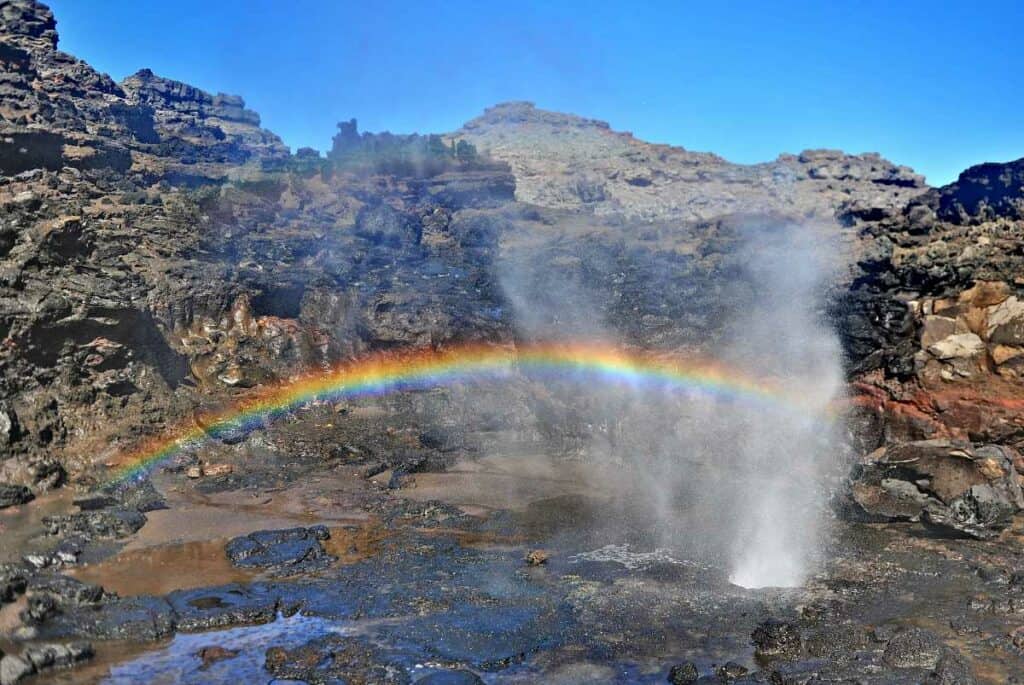
This is also the more interesting option since you are not traversing the same landscape, in fact, this trail is a bit greener.
You will cross minor trails like the Silversword loop, that you can take. The trails are well-marked, and you are headed in the direction of the Holua Campground.
As you reach the Holua Cabin, the sandy trail gradually changes to an easier dirt trail, with cinder rocks alongside.
More vegetation appears, and the climb back up looms ahead.
The hike back to the rim of the crater is more sharply inclined with steeper switchbacks, so conserve some energy for this last stretch!
The views from the trail are spectacular (if cloudy, hang around for a bit to see if it clears), and definitely a lot greener than we started with near the summit.
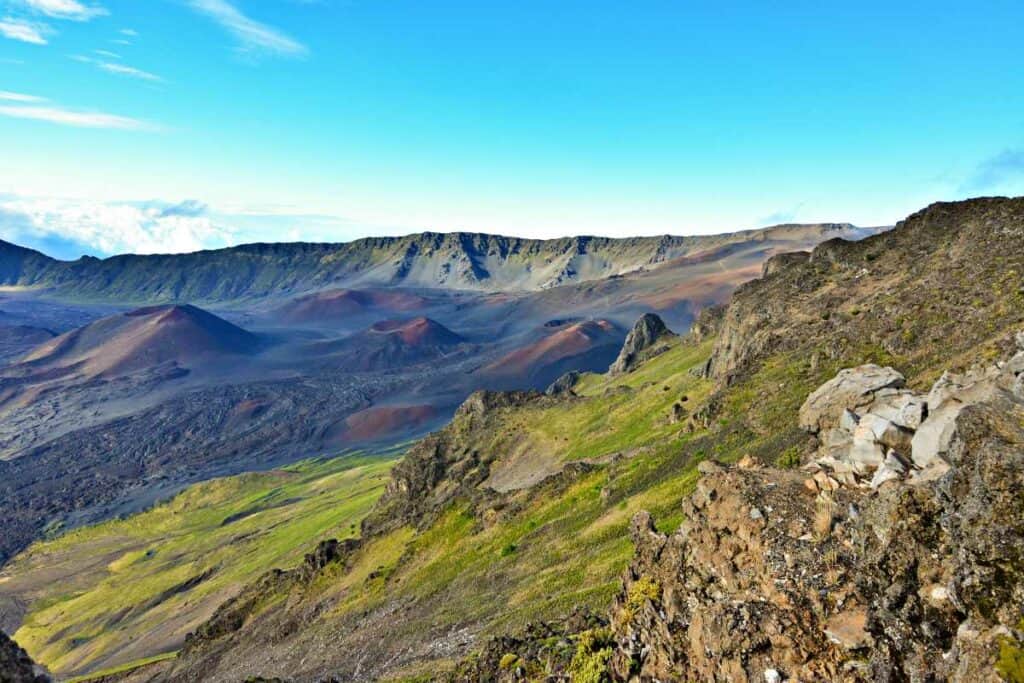
The trail ends at the Halemau’u Trailhead, which is hopefully where you parked!
A restroom is available at the trailhead.
Sliding Sands Trail: Entrance Fees, Reservations & Permits
Entrance Fees
Since the Sliding Sands Trail is a part of the Haleakala National Park, you will need an entance pass to enter the park.
The standard entrance pass is $30 / car (includes all people in the car), and you can buy the pass at the entrance station, and is good for three days.
If you plan to visit multiple national parks then consider the America the Beautiful pass!
Obviously, with the entrance pass you explore all the things to do in Haleakala National Park, apart from hiking the Sliding Sands Trail!
Early Entry Reservations
Planning to start the Sliding Sands Trail hike early or want to watch the sunrise from the trail or elsewhere in the Haleakala National Park?
Watching the sunrise from the summit of the Haleakala crater is an insane experience, and to better handle the crowds, the national park has instituted a reservation and timed entry system.
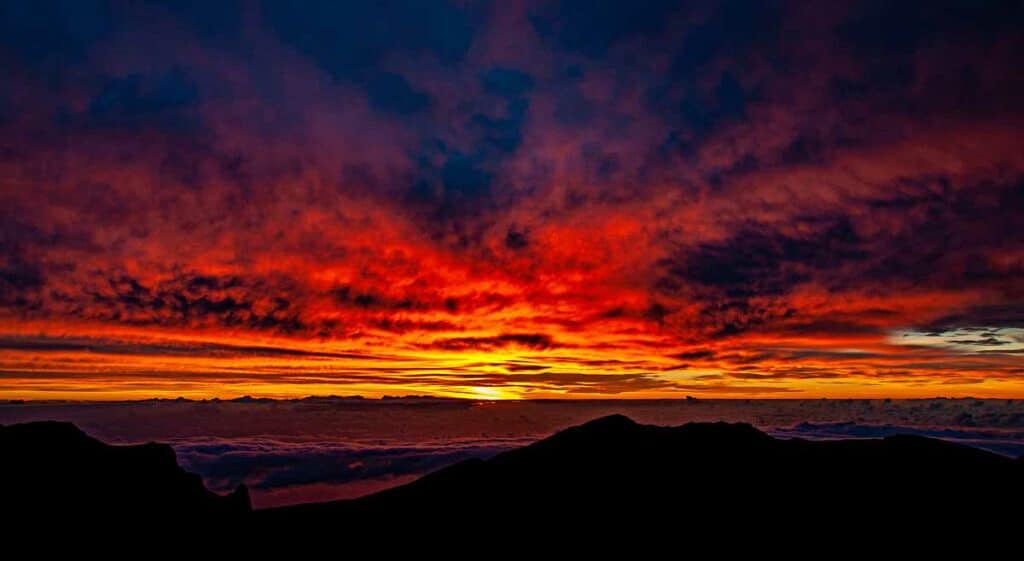
If you plan to enter the national park between 3:00 am and 7:00 am, you must make reservations. The cost is nominal ($1), and the intent is to control the number of visitors.
You can book your reservation 60 days in advance, and I recommend you do it when your window opens.
Hawaiian Birds to Spot on the Sliding Sands Trail Hike
Despite the bleak, desert-like terrain at the Haleakala crater summit and basin floor, you’ll still find some pretty Hawaiian birds, both while hiking the Sliding Sands Trail and nearby.
The iconic Hawaiian goose, nene (Hawaii’s state bird), can be spotted along the Sliding Sands Trail, and near parking lots, roadside, and visitor centers.
You can also see the chukar partridge, a game bird introduced to Hawaii, on the trail or near the observatory and at the Summit District Visitor Center.


If you’re an avid birdwatcher, the nearby Hosmer Grove Trail is one of the best Haleakala National Park hikes for spotting many of Mauai’s pretty birds!
In particular, you can see the beautiful red ‘apapane and the iconic scarlet-red i’iwi, endemic Hawaiian honeycreepers that typically feed on the nectar from the ohia lehua flowers.
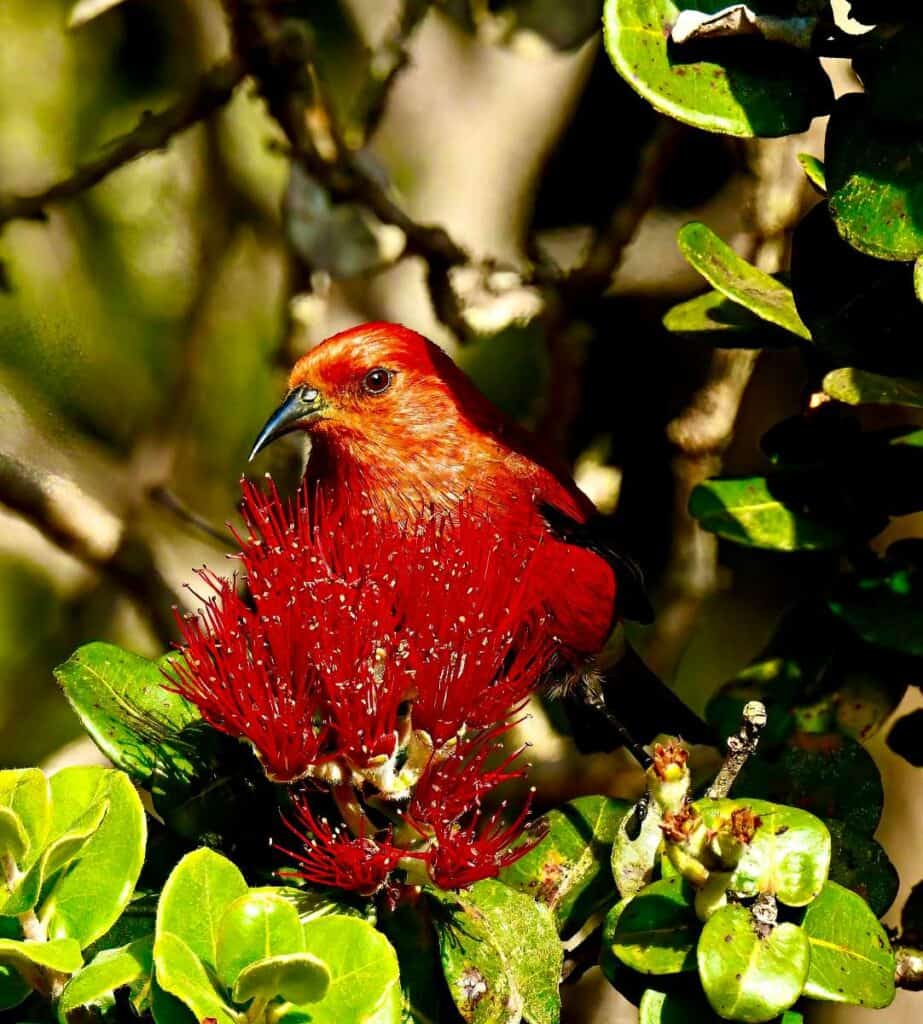
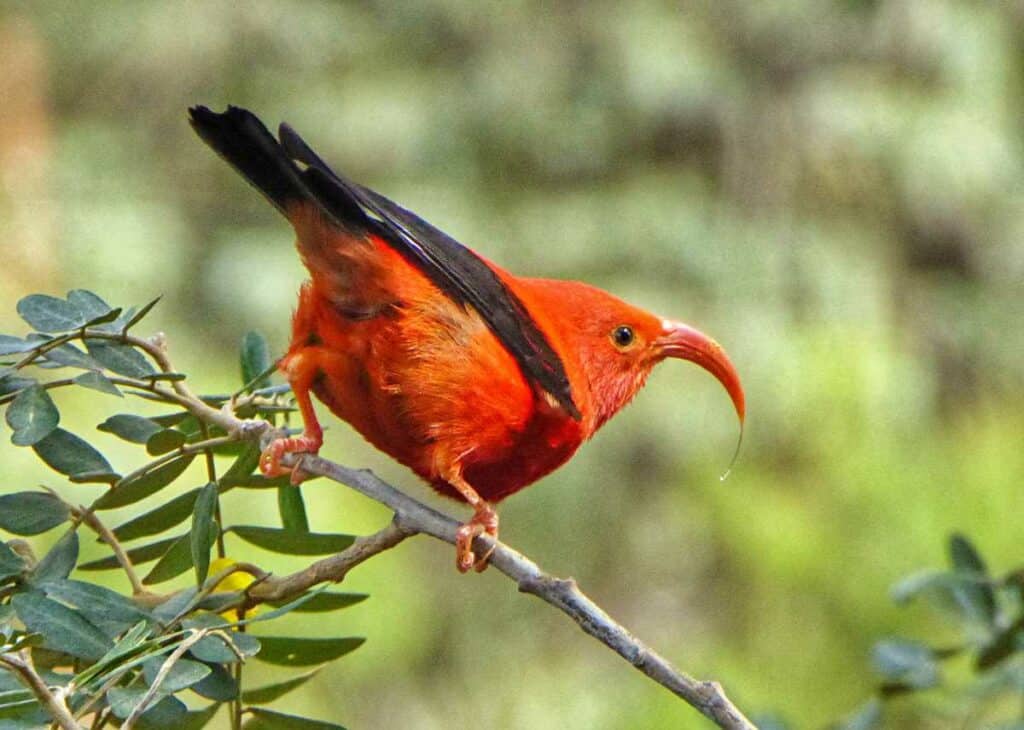
Refer to our detailed post on Hawaiian birds to identify and learn about these bird species, some endemic to Hawaii, and found nowhere else on the world!
Sliding Sands Camping
The Sliding Sands Trail hike is a long one, and some of you might want to take a break and stay the night in the beautiful Halaekala crater.
While Sliding Sands camping is permitted in the Summit District, the campsite, Hosmer Grove campsite, is nowhere near the Sliding Sands Trail.
While hiking the Sliding Sands Trail, you have only two viable camping options: the Kapalaoa Cabin and the Holua Campground, and both require staying in rustic cabins with vault toilets.
You can reserve a cabin 6 months in advance, and I recommend you book it the moment your window opens!
The cabins are true wilderness stay options, at remote, high altitude (6,000-7,500 feet) locations on the trail, accessible only by hiking (you cannot drive upto the cabin).
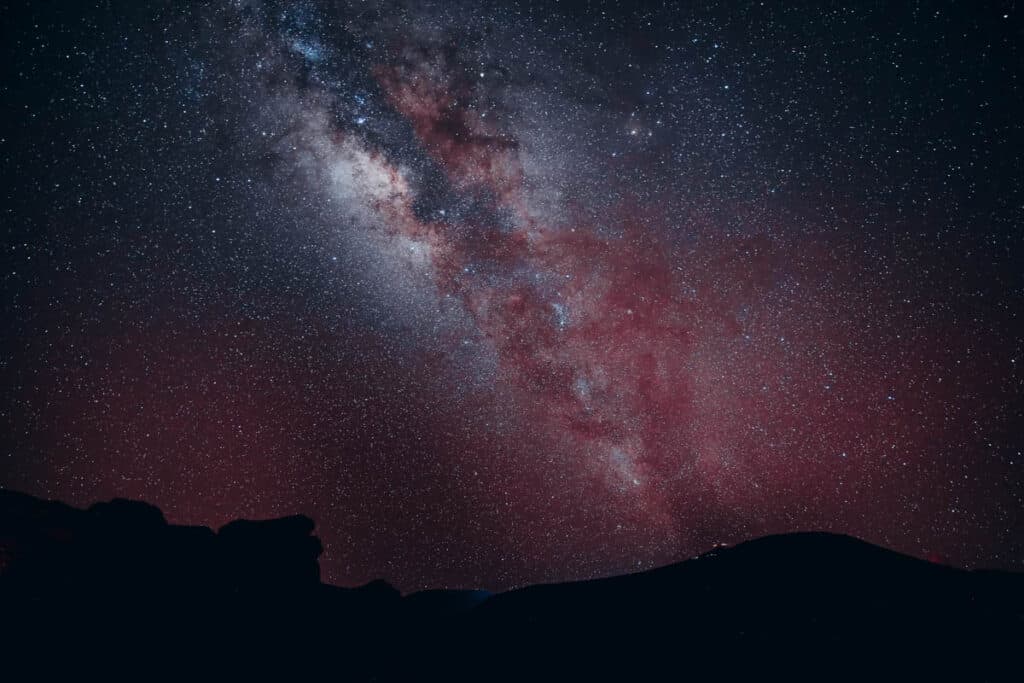
Don’t expect to find much in the cabin, bring everything you need, and expect to take back everything as well, including trash!
Hiking Gear Checklist
Many of Hawaii’s hikes are demanding, make sure you are well equipped and well prepared. Here’s what we typically take with us:
- Water Bottle: I hate plastic bottles, and with opaque bladders you can’t see if it is moldy inside. We use this Hydro Flask water bottle – light, stainless steel, wide mouth (you can add ice), with double-wall vacuum insulation (greatly refreshing for hikes in summer). You can also get it with a Flex Straw Lid!
- Hiking Shoes: My preferred hiking shoes are the medium range Merrell Moab 3 Waterproof Hiking Shoe (men’s, women’s, men’s mid), great for Hawaii’s trails through mud and streams. My wife loves her high-end Salomon X Ultra 4 GTX Hiking shoes (men’s, women’s), also waterproof.
- Sunscreen: Hawaii’s sun can be harsh. Avoid sunburn with sunscreen compliant with Hawaii’s 104 Reef Act. The Sun Bum Original SPF 50 Sunscreen Spray, moisturizing with Vitamin E, is our go-to when we travel to Hawaii. Apply liberally and regularly!
- Trekking Poles: Great for hikes that involve climbing, both going uphill and downhill, and on trails that are wet, muddy and slippery! Improve your footing with this collapsible, high-end Black Diamond Trail Cork Trekking Poles, available for men and women.
- Headlamp: Planning a sunrise or sunset hike? Hiking in the dark is no fun, especially on many of Hawaii’s rainforest or ridge hikes. We love these two headlamps: the budget Black Diamond Spot 400 Headlamp and the premium Petzl Actik Core Headlamp, with many features.
Tips for Hiking the Sliding Sands Trail
The most basic piece of advice is prepare for the altitude!
With the high altitudes on the Sliding Sands Trail (upto 9,900 feet), you need to prepare for cold (30 – 65 degrees Fahrenheit, may reach below freezing with wind chill), rain and harsh UV.
Dress like you are in snow country: layers that you can remove as you get deeper into the hike. Bring light rain jackets or ponchos.
There is no shade on the trail, use sun protection like a hat, sunglasses, and sunblock (a must for the harsh UV rays).
Altitude sickness, with symptoms of nausea, headache, dizziness and shortness of breath, hits the best of us, no matter our fitness level or age.
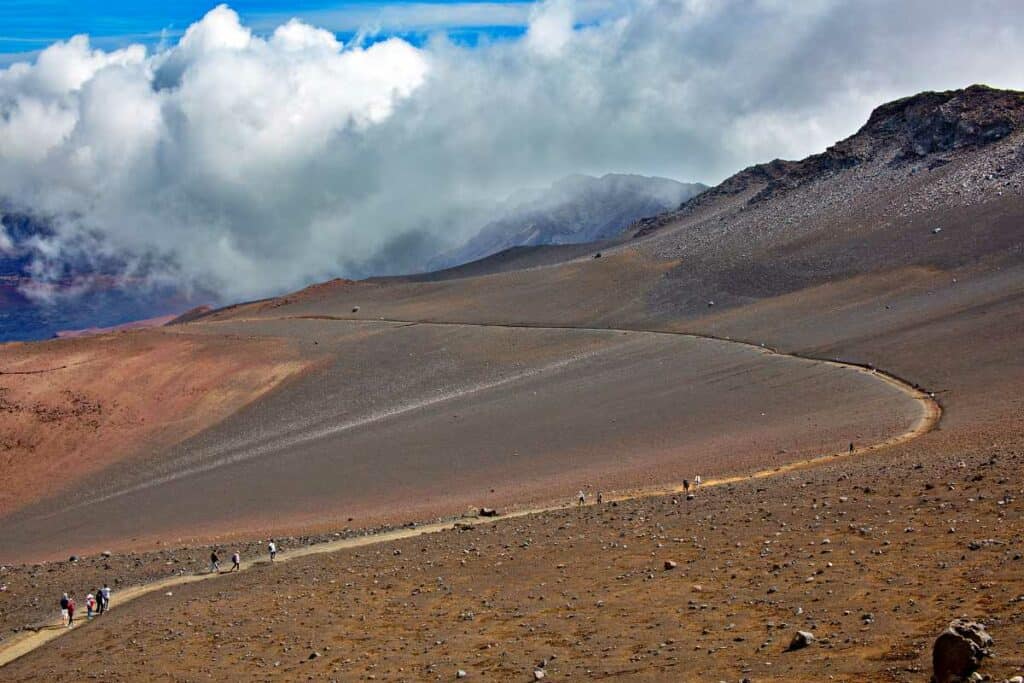
Drink lot of fluids and water, stay hydrated, and bring headache tablets.
Adjust your pace for the trail conditions. Soft cinder trails on the Haleakala crater floor are akin to sandy beaches, the ground shifts under you!
There is no food for sale in the park, so pack food, snacks and be overly conservative with the amount of drinking water.
Budget extra time for the return climb, a good rule-of-thumb is to allow twice as much time for the return trip.
Finally, be respectful of the habitat and the culture of the local people. Haleakala is sacred grounds for them.
You are required by law to stay on the marked trails, the Hawaiian ecosystems are fragile.
Don’t even think of picking up silverswords or lava pebbles.
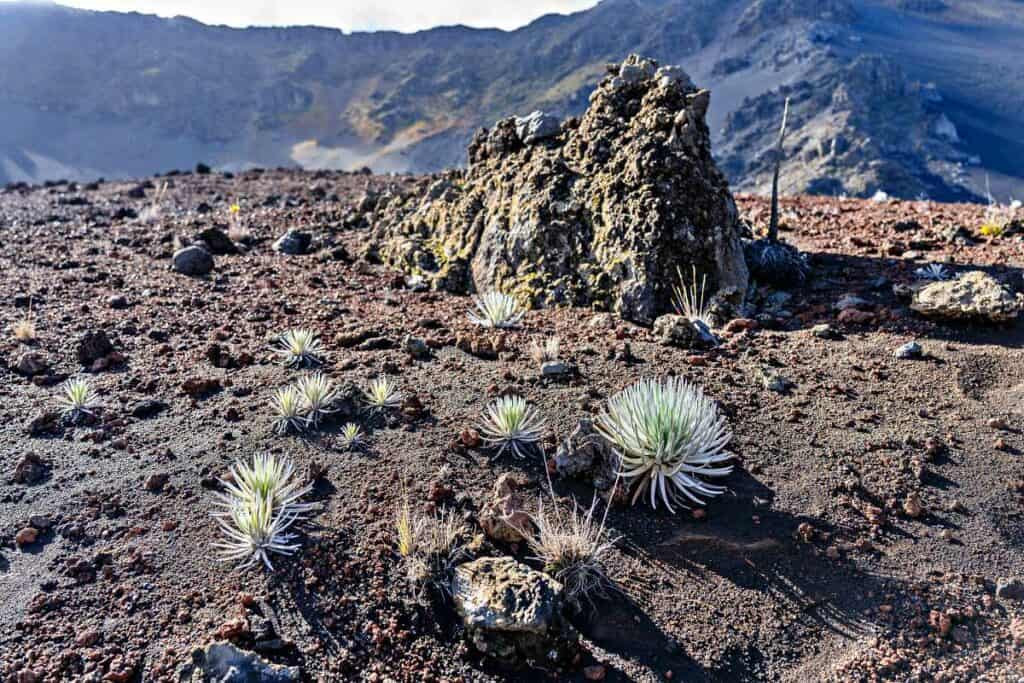
Not only is it not cool, you will be cursed by Pele, the Hawaiian goddess of fire and volcano, who jealously protects her children, the lava rocks and cinder sand!
What Else to Do near the Sliding Sands Trail?
You paid the entrance fee to Haleakala National Park, you might as well explore the rest of the park.
Best Things to Do in the Haleakala National Park
Check out the best things to do in the Haleakala National Park: watch the sunrise and sunset from the summit, watch birds in Hosmer Grove, and enjoy the views from the many overlooks, for example!
Hike the Pipiwai Trail to Waimoku Falls
For a very different kind of hike through rainforests and dense bamboo forests to an amazing 400-foot waterfall, take the Pipiwai Trail in the Kipahulu District of Haleakala National Park.
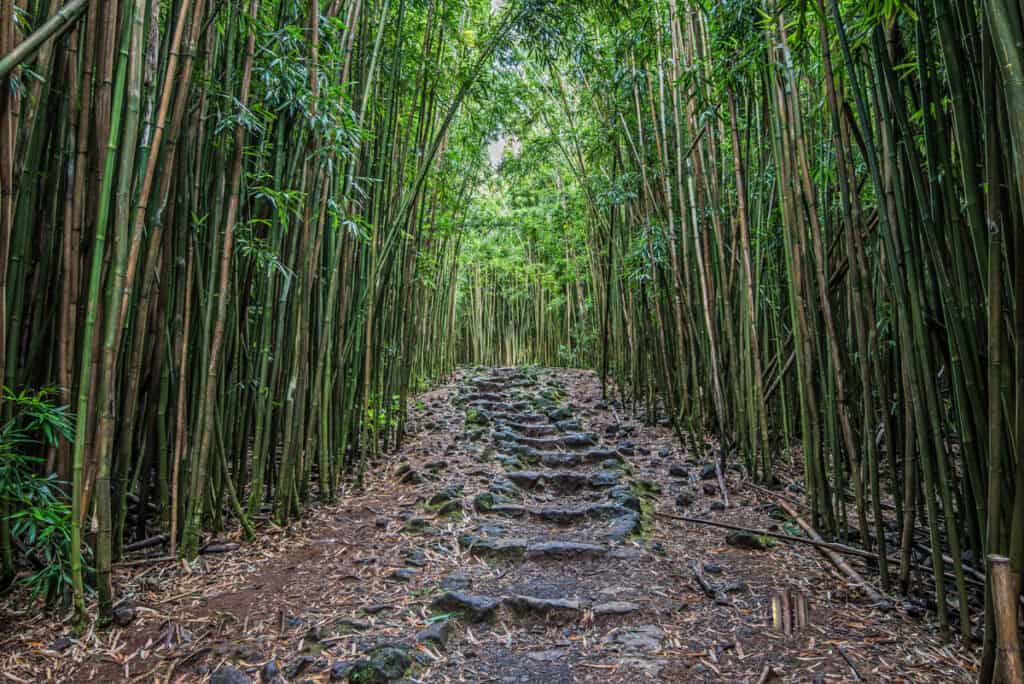
The Best Maui Tours
Have you booked these top-rated Maui guided adventures yet?
Small-group Road to Hana tour so everyone in your group can sit back and enjoy the views without worrying about negotiating hairpin bends or finding parking at popular stops!
A Haleakala sunrise tour so you can experience the bucket-list sunrise atop the volcano without the need to reserve a parking spot or drive up in the dark!
A Maui whale watching raft tour, which will let you see the massive humpback whales at eye level! (You can also opt for a more sedate boat whale watching tour.) A MUST winter Maui activity!
A Maui snorkeling excursion that combines the Molokini Crater with Turtle Town, the two most epic snorkeling destinations on the island!
A 7-line Maui zipline experience where you can glide over the forests on the north shore of Maui. Enjoy ocean views and navigate obstacle course challenges!
An oceanfront luau in Wailea where you can enjoy a sunset buffet and traditional Polynesian entertainment. You can also opt for a Kaanapali oceanfront luau.
Renting a Car in Maui
The best things to do in Maui are located all over the island.
Public transport options on Maui are minimal to non-existent, so if you want to explore the island beyond your base, you’ll want to book a rental car for your Maui trip.
We always use Discover Cars to book Maui car rentals. They search across a variety of rental car companies, both budget and brand, to offer you the best deals, AND they offer free cancellations. Plus, there are no hidden fees.
>> Check availability and prices on Maui car rentals now!
Where to Stay in Maui
Depending on whether you want a vacation rental with more room and the option to cook some of your meals, or you want a resort or hotel experience, and depending on which part of Maui you want to choose as your base, you have a variety of options.
By far the majority of visitors to Maui choose to base on the west side, where there is a large selection of accommodations available, from resorts and hotels to vacation rentals.
We suggest starting your search for Maui accommodations by browsing vacation rentals on VRBO. You can filter to choose a specific area, such as Kihei, Kapalua, or Wailea.
We have stayed in VRBO rentals in Kihei and Kapalua and find that the choice and quality are generally great.
>> Look for a Maui vacation rental on VRBO now!
More Maui Travel Inspiration
If you are considering a trip to Maui, read some of our other comprehensive guides to craft the ultimate Maui itinerary!
If you are a first-time visitor to Maui, start by reading our article on the best things to do in Maui. From beautiful beaches and lush rainforest to Maui’s volcanic crater, our round-up captures the most iconic Maui experiences and activities.
If you are dreaming of a winter getaway to a tropical paradise, read our guide on why you should visit Maui in winter!
If you are planning a brief first visit to Maui, here’s our 3-day Maui itinerary to help you flesh out your own trip! And if you are considering a couples getaway to Maui, read about the top romantic things to do in Maui!
Driving the Road to Hana is one of Maui’s bucket-list experiences. We have a comprehensive guide to the best stops on the Road to Hana, including waterfalls and short hikes on the way.
One of the top stops on the route is Wai’anapanapa State Park, which requires reservations. Read our full guide to Maui’s black sand beach in this popular state park!
Maui boasts one of only two national parks in Hawaii. Read our round-up of the best things to do in Haleakala National Park. We also have the ultimate guide to sunrise at Haleakala.
We also have a guide to the best hikes in Haleakala National Park, and in-depth hiking guides to the two most epic hikes in the park: the Sliding Sands Trail and the Pipiwai Trail.
Speaking of hiking, also be sure to check out our round-up of the best Maui hikes, from easy to challenging. Plus, peruse our complete guides to hiking the popular Kapalua Coastal Trail in northwest Maui, and the Waihee Ridge Trail for astounding views!
We also have a round-up of the best waterfalls in Maui, from the 400-foot Waimoku Falls to Upper Waikani Falls near Hana. Some Maui waterfalls can be seen from viewpoints whereas others require hiking.
Water activities are plentiful in Maui! Check out our epic guide to whale watching in Maui, and our guide to the best Molokini snorkeling tours and the best Turtle Town snorkeling.
If you’d rather snorkel from shore, read our round-up of the best snorkel spots in West Maui.
Every Maui itinerary should have plenty of beach time: there are so many beautiful beaches in Maui that you are spoiled for choice. We have a round-up of the best beaches in South Maui, plus a detailed guide to Wailea Beach in southwest Maui, and one for Maluaka Beach along the Turtle Town stretch of coast.
We also have articles on the much-visited Kaanapali Beach, the popular Napili Beach and local favorite Keawakapu Beach. Along the northwest side, Honolua Bay is a famous surfing spot, and Ho’okipa Beach, near Paia, is a windsurfing mecca.
If you are looking to experience a different side of Maui, plan a visit to the Iao Valley State Monument. The lush landscapes and serene ambience will wow you! Also read our guide to Maui’s state parks, which include popular Makena State Park, home to Big Beach and Little Beach.
Spend a day exploring Upcountry Maui. Some of the best things to do in Upcountry Maui include touring farms and gardens. Help milk goats, tour a tea farm, go wine tasting and much more.
Did you find this article informative? Pin it on Pinterest for later!
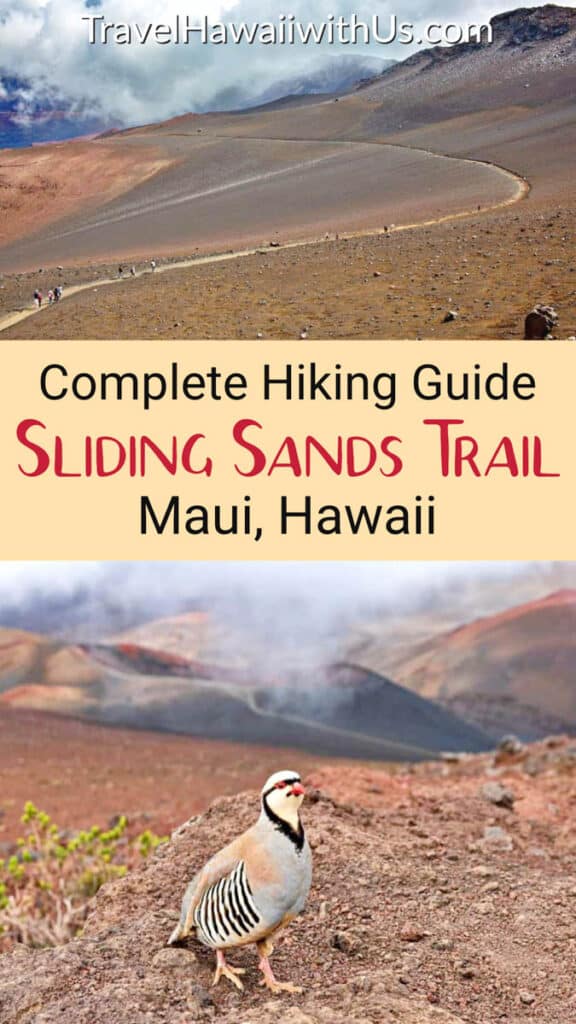
Disclaimer
All information provided on this blog is for informational purposes only and is subject to our terms and conditions of use. It is not a substitute for information or advice from official agencies or qualified professionals.
SV Travel Media LLC makes no representations or warranties regarding the accuracy or completeness of the information provided here, and readers should use their own discretion and judgement, and seek advice from professionals where needed.
Your use of the information described in, and your participation in activities presented on our website may carry the risk of illness, bodily injury, disability, death, or property damage. You freely assume all risks and dangers that may occur as a result of your access, use, purchase, or participation in any information, activity, product, or service listed on our website.

